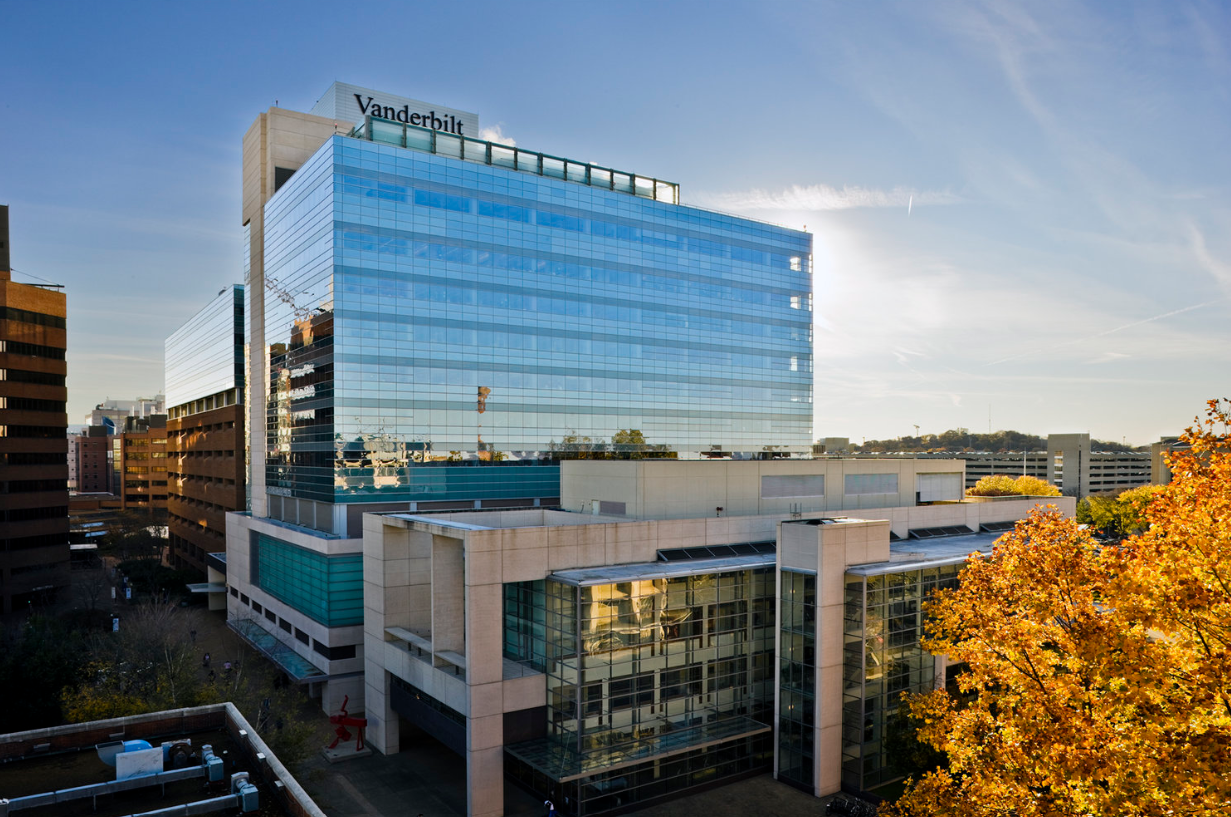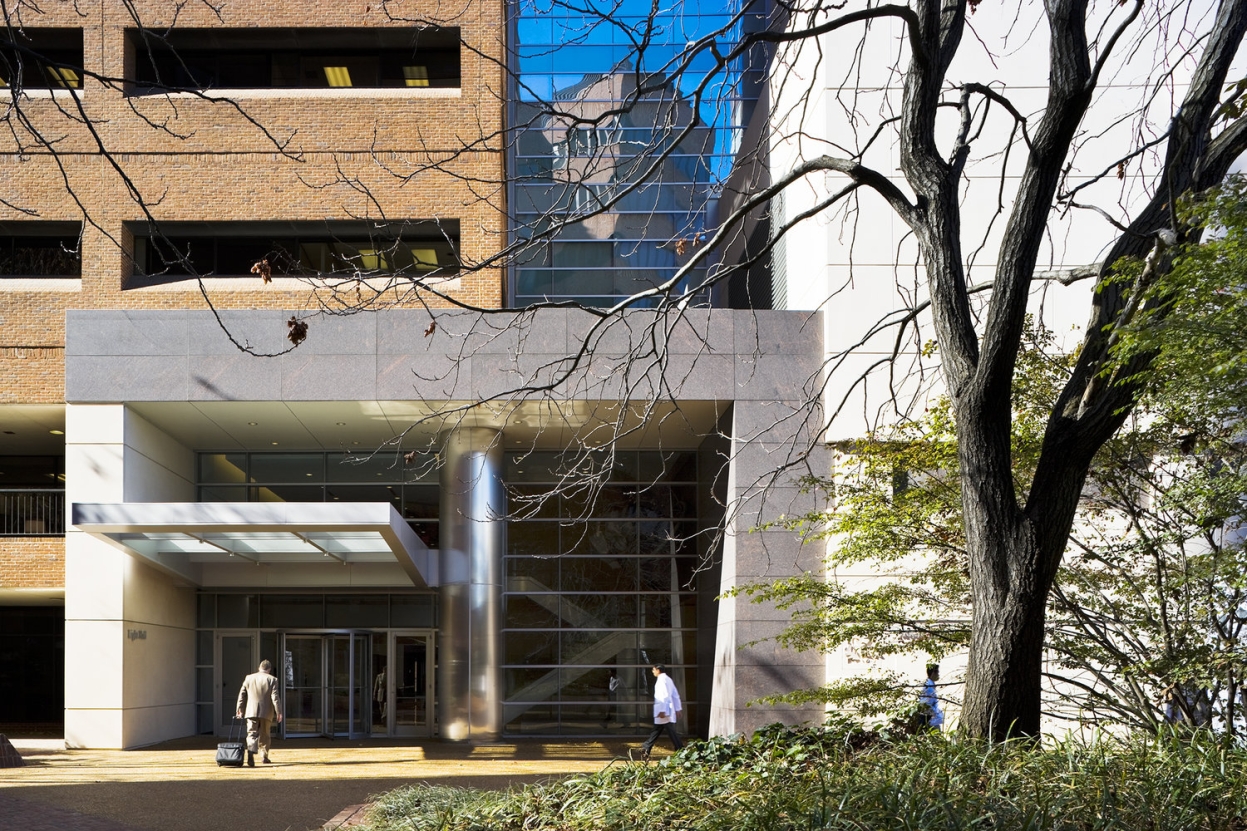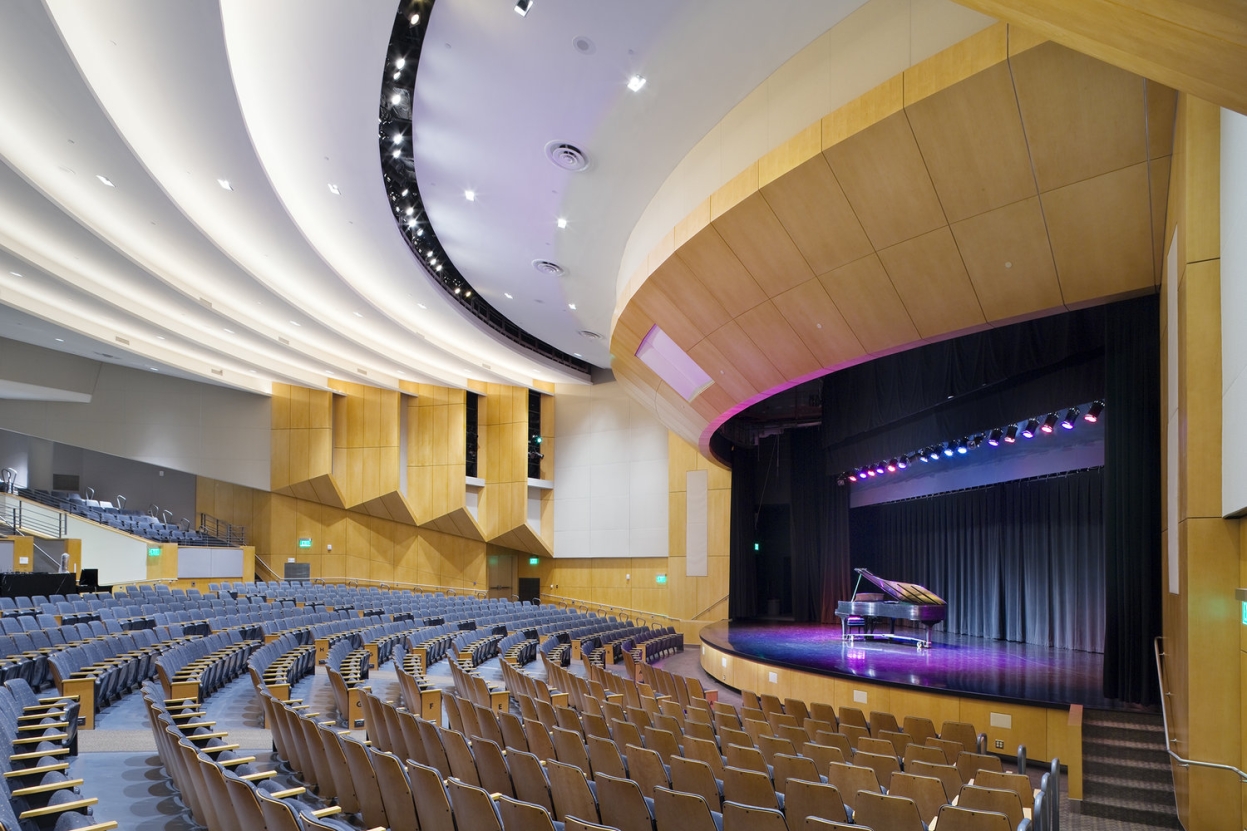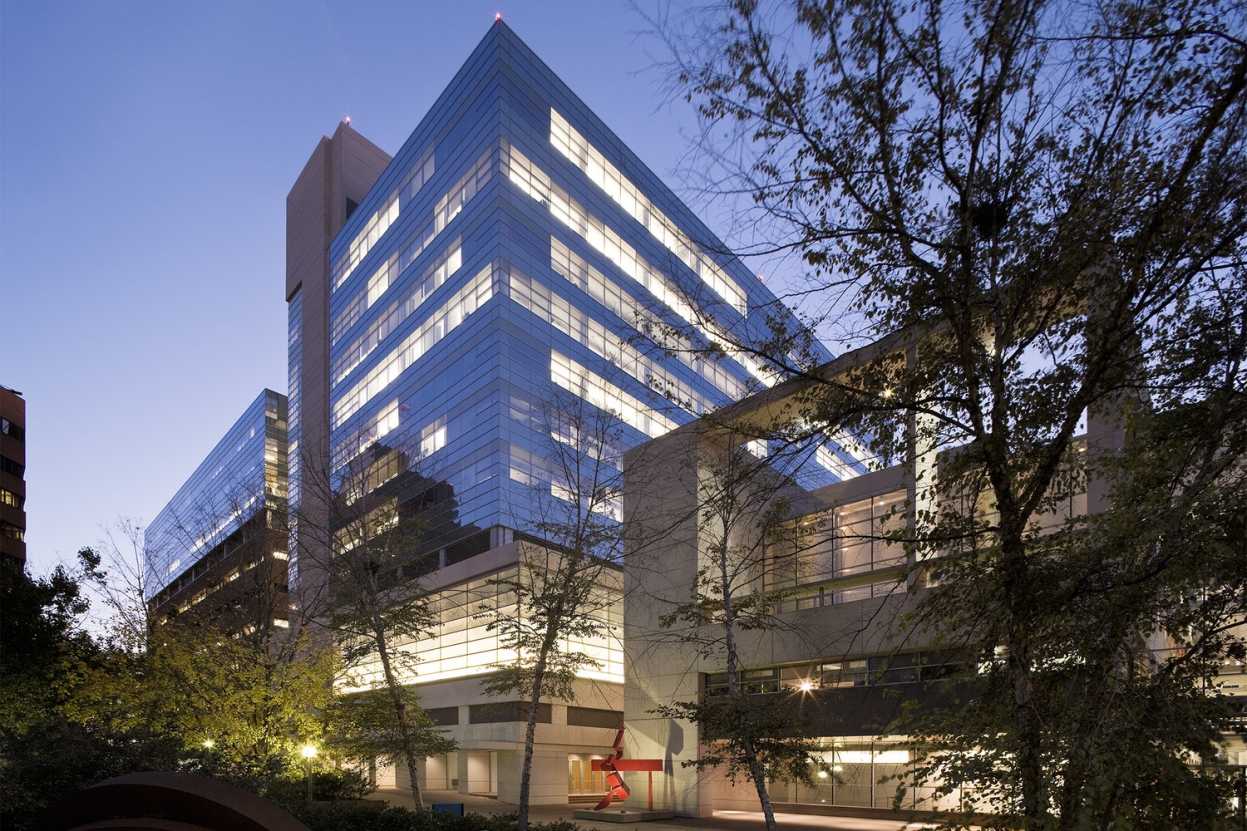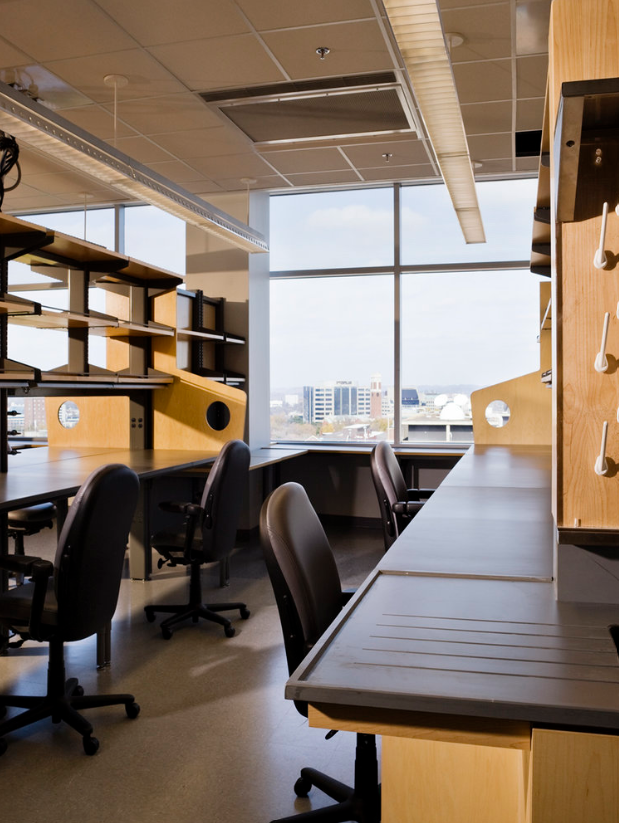Vanderbilt University Medical Center, like many other major urban academic medical centers, is densely developed. The need for expansion of clinical, teaching, and research programs conflicted with the limits of the campus. Davis Brody Bond, a Page company updated Vanderbilt’s Master Plan and looked at creative solutions to develop building and site options within the Medical Center involving phased construction over existing buildings.
This approach led to the design of the medical research facility known as Medical Research Building IV, built over two existing occupied buildings which remained in use during construction. Phase I consisted of a four-story vertical expansion of an older laboratory. Phase II consisted of a research tower that spans over an existing auditorium building. The new research tower houses several components of the Vanderbilt Institute for Clinical and Translational Research.
The Epithelial Biology Center, created to support basic, translational, and clinical research in gastrointestinal (GI) cancer. The facility features biomedical research, medical student training, and clinical patient care spaces. The Vanderbilt Center for Stem Cell Biology, part of the National Heart, Lung and Blood Institute Progenitor Cell Biology Consortium, is one of only two medical institutions in the country to play a leading role in both clinical and basic science arms of stem cell research.
Our solution provides 400,000 square feet of new, state-of-the-art biomedical research laboratories without the need to expand the Medical Center’s campus nor any major impact to the campus’ site plan and functional layout. Other benefits include optimal adjacencies for various interdisciplinary research programs, improved MEP infrastructure, and improved building efficiencies.
Building Facts
- 400,000 Square Feet
- Architecture / Lab Design
